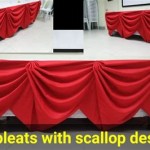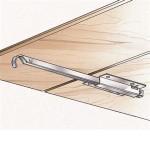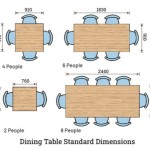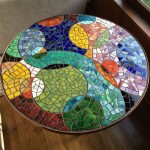How To Make Retractable Table Legs
The design of retractable table legs offers a compelling solution for optimizing space and enhancing furniture versatility. Such a mechanism allows a table to be readily converted between varying heights or completely collapsed for storage. This article will explore the process of constructing retractable table legs, focusing on key design considerations, necessary materials, and step-by-step construction techniques.
Before embarking on the fabrication process, it is crucial to assess the intended application of the table. The size, weight, and anticipated load-bearing requirements will significantly influence the selection of materials and the complexity of the retraction mechanism. Furthermore, consider the desired aesthetic; the retractable mechanism should be integrated seamlessly into the overall design of the table.
Key Considerations for Retractable Table Leg Design
Several critical factors must be addressed when designing retractable table legs. These include the load capacity, stability, ease of operation, safety features, and the integration of the retraction mechanism within the table’s structure.
Load Capacity: The primary consideration is the weight the table will be expected to bear. This will dictate the choice of materials for the legs and the strength of the locking mechanism. Solid hardwoods, like oak or maple, or metal tubing, such as steel or aluminum, are common choices for the legs themselves. The connection points and locking mechanisms must be equally robust to prevent collapse under load. Conducting a thorough load analysis is essential to ensure the safety and longevity of the table.
Stability: Retractable legs must provide adequate stability in both the extended and retracted positions. This requires careful consideration of the leg geometry and the rigidity of the locking mechanism. Widening the leg stance can improve stability, but this might compromise the aesthetics or the desired compactness when retracted. Incorporating bracing or cross-members can also enhance stability, particularly for larger tables. The locking mechanism must be designed to minimize play or wobble when the legs are extended.
Ease of Operation: The retraction and extension process should be straightforward and require minimal effort. This necessitates a user-friendly locking mechanism that is easily engaged and disengaged. The design should also ensure that the legs move smoothly and without excessive friction. The mechanism should be accessible and intuitive for the user.
Safety Features: Safety is paramount. The locking mechanism must be reliable and prevent accidental collapse of the legs. A dual-locking system, where two separate actions are required to release the legs, can provide an extra layer of security. Warning labels or instructions can also be incorporated to ensure users understand the proper operation of the retraction mechanism. Careful attention should be paid to potential pinch points in the design to prevent injuries during operation.
Mechanism Integration: The retraction mechanism should be integrated seamlessly into the table's design. Ideally, the mechanism should be concealed or at least aesthetically compatible with the overall style of the table. The chosen mechanism should also allow for easy access for maintenance or repairs. The integration should not compromise the structural integrity of the table or the ease of operation.
Materials and Tools Required
The selection of materials is crucial for the functionality and longevity of retractable table legs. The specific materials will depend on the desired aesthetic, load capacity, and the complexity of the chosen retraction mechanism.
Leg Material: As previously mentioned, options include hardwoods (oak, maple, walnut), metals (steel, aluminum), or durable plastics. The choice depends on the desired strength, weight, and aesthetic. If using wood, ensure it is properly seasoned to prevent warping or cracking. If using metal, consider the finish required for corrosion resistance and aesthetic appeal. Powder coating or anodizing are common options for metal finishes.
Retraction Mechanism Components: This may include hinges, sliding brackets, locking pins, springs, and fasteners. The type of mechanism chosen will determine the specific components needed. High-quality steel hinges and brackets are recommended for durability. Locking pins should be made of hardened steel for strength and resistance to wear. Springs should be selected based on the required force for smooth operation of the mechanism.
Fasteners: Use appropriate screws, bolts, and nuts for connecting the various components. Consider using thread-locking compounds to prevent loosening over time. Ensure that the fasteners are compatible with the chosen materials. For example, stainless steel fasteners are recommended for outdoor applications to prevent corrosion.
Tools: A well-equipped workshop is essential for constructing retractable table legs. Required tools include a saw (table saw, circular saw, or hand saw), drill, screwdriver, measuring tape, level, clamps, sandpaper, and potentially welding equipment if metal fabrication is involved. Safety glasses and hearing protection are crucial for safe operation of power tools.
Step-by-Step Construction Process
The following is a general outline of the construction process. The specific steps will vary depending on the chosen design and the complexity of the retraction mechanism.
Planning and Design: Develop a detailed plan or schematic diagram of the table and the retractable leg mechanism. This should include precise measurements and material specifications. Consider using CAD software to create a 3D model of the design. This will help visualize the final product and identify potential problems before construction begins.
Material Preparation: Cut the leg material to the required dimensions. If using wood, sand the surfaces smooth and apply a finish if desired. If using metal, deburr the edges and apply a protective coating. Ensure all components are accurately sized and prepared for assembly.
Mechanism Assembly: Assemble the retraction mechanism according to the design. This may involve attaching hinges, brackets, and locking pins. Ensure that all components are properly aligned and securely fastened. Test the mechanism to ensure it operates smoothly and locks securely in both the extended and retracted positions.
Leg Attachment: Attach the retractable mechanism to the table legs. This may involve using screws, bolts, or welding. Ensure that the legs are securely attached and that the mechanism is properly aligned. Test the stability of the legs in both the extended and retracted positions. Add bracing or cross-members if necessary to improve stability.
Table Frame Construction: Construct the table frame or apron to which the legs will be attached. This frame should be strong and rigid to support the weight of the tabletop and the legs. Ensure that the frame is accurately square and that the leg attachment points are properly aligned.
Leg Integration: Integrate the legs into the table frame. This may involve attaching the legs directly to the frame or using a separate mounting plate. Ensure that the legs are securely attached and that the retraction mechanism operates smoothly. Test the overall stability of the table in both the extended and retracted positions.
Finishing: Apply a finish to the table and legs to protect the materials and enhance the aesthetic appeal. This may involve sanding, staining, and applying a clear coat. Ensure that the finish is compatible with the chosen materials. Allow the finish to dry completely before using the table.
Testing and Refinement: Thoroughly test the table and the retraction mechanism. Check for stability, ease of operation, and security of the locking mechanism. Make any necessary adjustments or refinements to ensure that the table functions as intended. Conduct a load test to verify that the table can support the anticipated weight. Address any issues before putting the table into regular use.
The construction of retractable table legs requires careful planning, precise execution, and a thorough understanding of the principles of mechanics and material science. By following these guidelines and paying close attention to detail, it is possible to create a functional and aesthetically pleasing piece of furniture that maximizes space and enhances versatility.

Diy Folding Table Ideas That You Can Build Easily Smart With Self Opening Legs

How To Build A Folding Table Simple Diy Woodworking Project

How To Build An Easy Diy Folding Table Family Handyman

Prototyping An Inexpensive Set Of Folding Table Legs Out Construction Lumber Core77 Diy Wood Projects Furniture

How To Make A Folding Table 20 Diy Plans Outdoor Legs

Prototyping An Inexpensive Set Of Folding Table Legs Out Construction Lumber Core77

Diy Folding Desk Jaime Costiglio

Free Woodworking Plans To Build A Fabulous Folding Table The Design Confidential

Diy Plans To Build A Folding Table Designs By Studio C

How To Make Folding Leg Japanese Table
Related Posts








